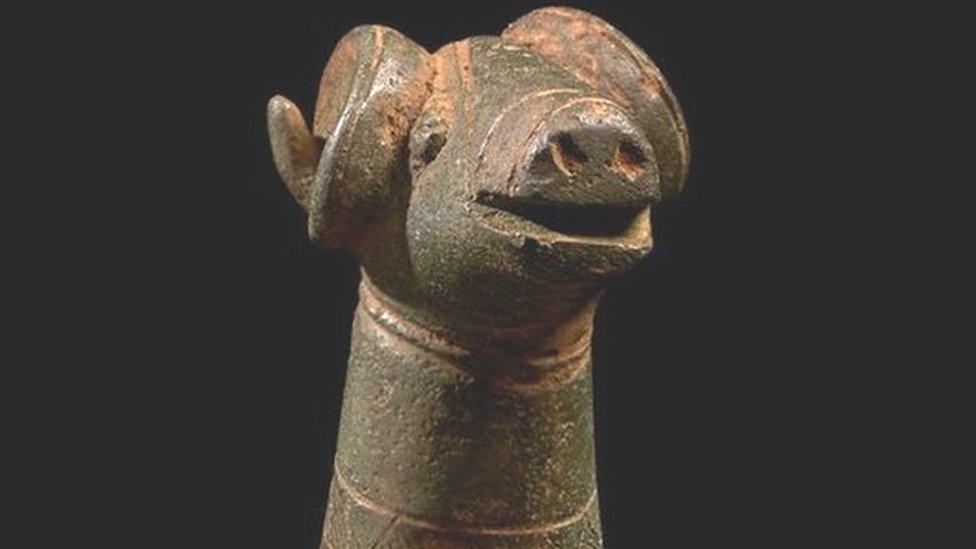'Reminder of death' treasure found in Cornwall
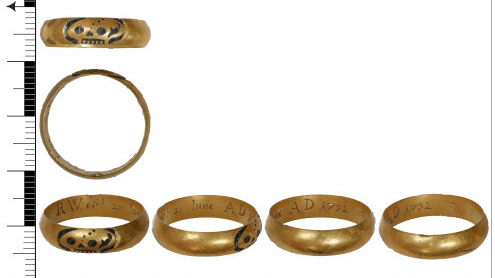
A ring which reminds people of death has been found and declared treasure by a coroner
- Published
A piece of treasure which dates back to the 1600s and is a "reminder of death" is one of seven pieces of history uncovered by metal detectorists in Cornwall recently.
A number of items were put forward as part of a treasure inquest on 22 July.
Other finds include Bronze Age arrow heads, an 18th century gold skull ring and a gold Bronze Age bracelet, which were all ruled as treasure by the coroner.
Laura Miucci said there were "a lot of prehistoric finds" in Cornwall and "significant finds".
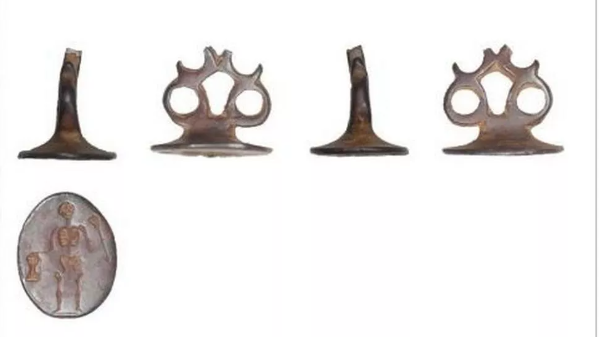
These items would have been used to make an impression on a wax seal
A treasure inquest is a hearing to determine whether objects found are treasure so museums can acquire them.
One of the finds was a silver seal matrix, used to make an impression on a wax seal.
The matrix dates back to the 1600 to 1700s, and Ms Miucci said it was a "memento mori", which means to be mindful of death.
She said: "When you look at the matrix you can see a skeleton holding an arrow pointing to the ground to suggest you will end up in the ground, we will all go to the earth, and an hourglass in the other hand."
She added: "The 1500s to the 1800s we had this period where people are obsessed with death, cheating death and living as long as possible.
"All these different herbal remedies, as you can imagine lots of plagues around that time so you look to God, to religion to save you from dying too young.
"That's what's so poignant about this matrix it's a memento mori, you remember you will die."
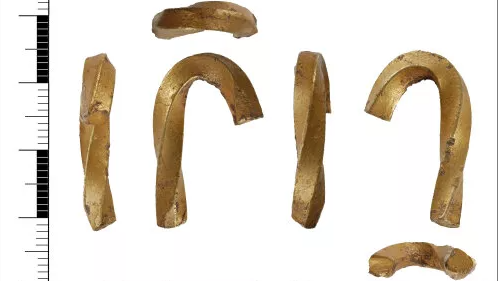
These bracelets date back to about1275 to 1140, officials say
Another item found to be treasure was a bracelet which dates back to the Pennard phase.
This was a metalworking phase of the Bronze Age in Britain from 1140 to 1275.
Ms Miucci said: "What was particularly interesting about this piece is it was very twisted, almost as if someone has got the gold whilst it's relatively molten and twisted it around, so it looks really pretty.
"The twist is done while it's being made rather than during deposition. This was intentional and deliberately made as a decorative element."
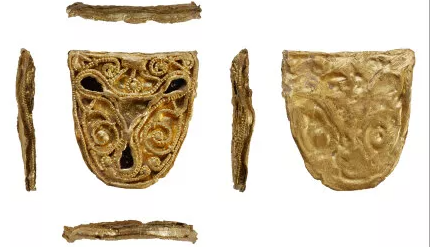
The item contains more than 10% of precious metal
A strap end from a sword was also found in Cornwall.
It was found the object contains more than 10% precious metal and is more than 300 years old.
Ms Miucci said it was a "rare find".
She said: "You can see people have gilded gold onto this strap end and twisted it in such a way it makes beautiful spiral.
"Each spiral is twisted gold, which is obviously some delicate work which has taken some time to do. The inset looks to be garnet."
She said the garnet, a type of gemstone, could be native to Cornwall.
"We rarely find such beautiful anglosaxon early medieval finds in Cornwall like this. It's been compared to some of the really big treasure hoards over the years."
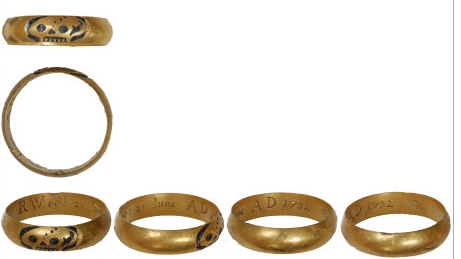
A gold ring with a skull engraved onto it was another item at the treasure inquest.
Ms Miucci said it was another 'memento mori' item - a reminder of death.
She said: "It's quite a popular style of mourning ring, it's quite a plain band with a skull in black enamel on the outside and the initials and date of death of the person who died on the interior of the ring.
"What's particularly interesting about this is it's a memento mori ring and also a mourning ring."
Follow BBC Cornwall on X (formerly Twitter), external, Facebook, external and Instagram, external. Send your story ideas to spotlight@bbc.co.uk, external.
Related topics
- Published30 January 2024

- Published24 January 2024
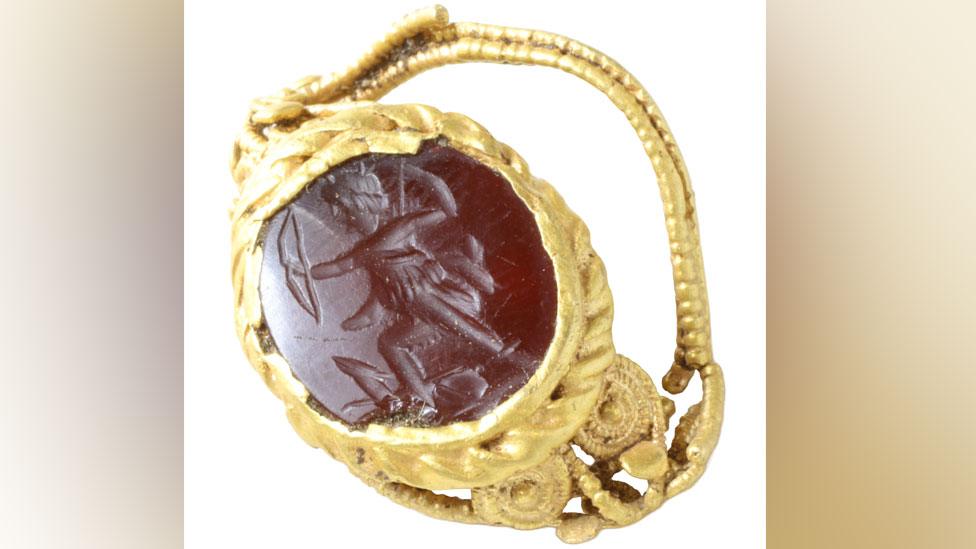
- Published28 February 2024
